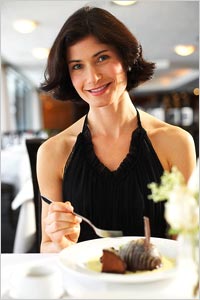 Here are 12 consumer trends that
food/beverage makers should be attuned to in 2012, according to Bellevue, Wash.-based research and consulting firm The Hartman Group. These are covered in detail in a new, downloadable report, and were summarized in Hartman’s newsletter.
Here are 12 consumer trends that
food/beverage makers should be attuned to in 2012, according to Bellevue, Wash.-based research and consulting firm The Hartman Group. These are covered in detail in a new, downloadable report, and were summarized in Hartman’s newsletter.
In addition, below those, Hartman’s assessment
of which foods/ingredients will be hot in 2012, and which will become passé.
Consumer/Cultural Trends
1. Meal fragmentation: Today's households are run
as "loose democracies" in which children have an equal say in what, where and when the family should eat.
2. Eating alone: Forty-four percent of adult eating happens alone. Most CPG marketing
ignores this reality.
advertisement
advertisement
3. The snack culture: Nearly half (48%) of all adult eating occurs between meals, a combined result of the increase in eating alone and the decline in family dining.
However, a return to commitment to family dining will continue to gain momentum, says Hartman.
4. Immediate consumption: More than 11% of all adult eating today includes foods or
beverages consumed within one hour of purchase. Immediate consumption reflects a long-term shift toward impulsive, unplanned eating.
5. The new American family: Marketers need to focus on
today's nontraditional, intergenerational, unmarried, single-parent, multi-ethnic families.
6. Wellness is driven by quality-of-life issues: People strive for health/wellness in order to
enjoy a better life. That’s why, for example, people are increasingly using dance for exercise, rather than treadmills.
7. Food culture is more complex than ever: Food makers need to
understand all of food culture – meaning all food niches, trends and preferences, not just their own categories and specialties.
8. Education only goes so far: Hartman notes
that research, including its own, is so far inconclusive as to whether calorie counts on menus change purchase behaviors. But what is clear is that consumers want help that supports their interests in
food and cooking.
9. Eating occasions proliferate: Hartman has identified more than 150 distinct eating occasions beyond the traditional daily meals or day parts. CPG brands and
retailers should better leverage these opportunities.
10. You can’t buy loyalty: Engendering loyalty among Millennials takes transparency and integrity, as well as fun.
11.
Niche brands represent opportunities: As CPG categories become overcrowded, smaller brands that appeal to niche needs or subcultures have become good investments.
12. Retail needs a
makeover: The retail experience has lost significance with today's shoppers, who want culturally relevant retail and brand experiences, maintains Hartman.
Some other important
trends:
- Eating from the local landscape, including “wild crafting” and stressing purity, freshness, simplicity and ethics in food sources and cooking.
- Scarcity over ubiquity. Rewarding consumers with something exciting and rare (examples: McDonald’s McRib; Trader Joe’s “treasure hunt” dynamic).
- Smaller can be better. Not only for weight management purposes, but in terms of cost and sustainability.
- Food science will enable creating individualized diets that reflect
individuals’ genetic makeup, replacing “one-size-fits-all” better-for-you diets.
- Rejecting “nutritionism,” meaning celebrating or demonizing
particular ingredients rather than focusing on foods as a whole. This has allowed processed foods to go relatively unchallenged, even as whole, fresh foods are far too infrequently consumed, says
Hartman.
- Approaches to gluten-free become more knowledgeable. A wheat-free approach may create deficits in fiber, protein and vitamins. Gluten-free products made with potato or
tapioca starches may hinder digestion and cause weight gain over time. Hartman advises food makers to focus on real foods from authentic gluten-free traditions (such as Vietnamese rice noodles,
Italian polenta, Indian poppadam) rather than “mimic products that consumers will only compare against the real thing.” This “will ensure that your product lasts beyond the
gluten-free mania,” they add.
Foods/Ingredients: The In and Out Lists
Foods that are in for 2012, according to Hartman, include: real
butter and healthy fats; grass-fed meat; sea salt; stevia; dark-meat chicken; local/seasonal super fruits; cage-free whole eggs; farmstead cheese; fresh produce; portion control; craft beer; kettle
potato chips and dark, leafy greens.
On the way out: margarine; processed soy protein (GMO, hormonal effects); low-sodium; fat-free; artificial sweeteners; white-meat chicken; from-afar super
fruits; egg whites; processed cheese; excessive supplements; ultra-light beer; baked potato chips and wheat-grass shots.
Ingredients that are in include: coconut oil (contains beneficial
lauric acid); palm sugar (no fructose); faro (nutty, complex grain); cheaper, tasty butcher cuts (sustainable use of whole animal from a trusted source); and kefir (higher level of probiotics than
yogurt).
Losing appeal: canola oil (GMO, highly processed); agave (may contain higher fructose than HFCS); brown rice (still a staple, but getting boring); “naturally raised”
meat (phrase has become meaningless) and probiotic enhanced yogurt (often includes sugar and modified corn starch).